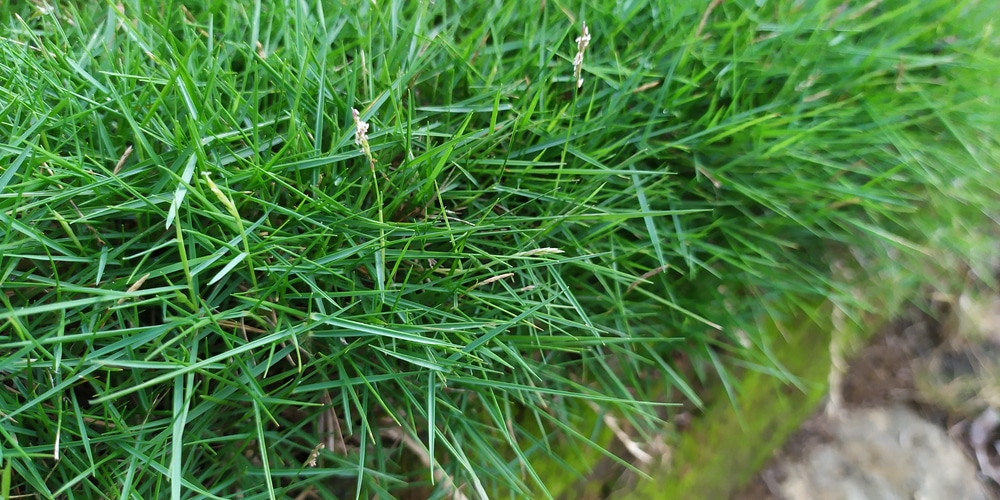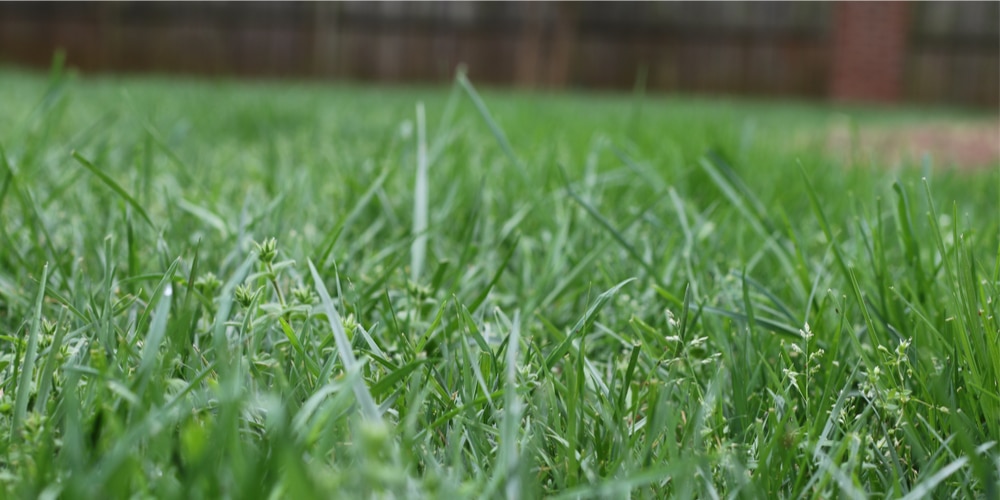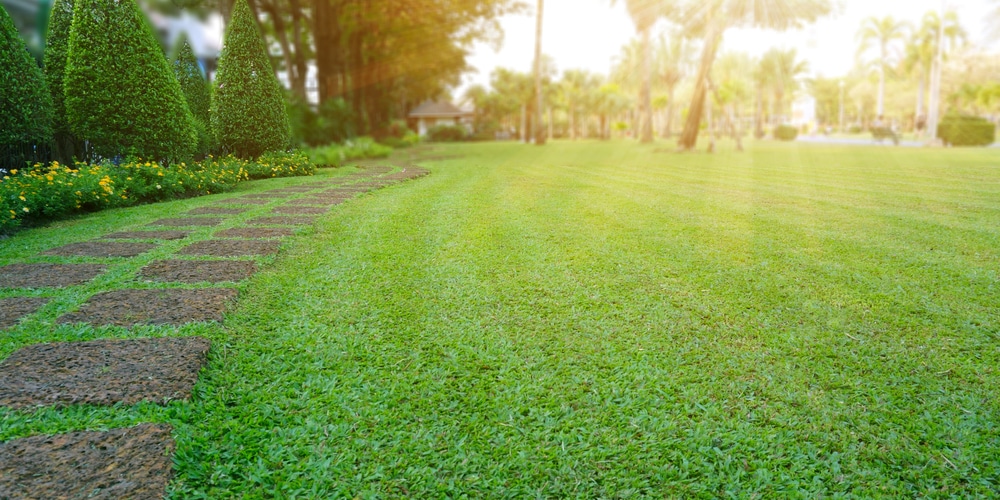There are several different types of grasses, each offering different benefits that homeowners should consider before making a decision on the type of lawn they want. Here is a look at the pros and cons of zoysia grass VS fescue.
Zoysia grass vS fescue
Zoysia grass and fescue are both popular lawn turfs that grow across the united states. They have many similarities but also a few differences. The main difference is that zoysia is a warm-season grass while fescue is a cool season grass.
Zoysia

Zoysia grass is a species that was imported into the United States from Asia in 1895. It’s a warm season grass that thrives best in tropical climates but will grow in slightly milder climates throughout America.
Zoysia grass is dark-green and very low-maintenance. It can be mowed as low and still look great. This kind of grass does not require a lot of water or fertilizer, but it should be cared for well throughout the growing season.
Zoysia grass also has natural pest resistance that makes it durable against pests, such as grubs and chinch bugs. This variety of grass spreads by creeping roots. It also offers a soft texture when kept at a short height. This makes it great for families with pets and children or anyone with bare feet.
Pros
- Zoysia is a very hardy grass that can withstand a lot of wear and tear.
- It also requires less mowing than other types of grass, making it a good choice for people who don’t have a lot of time to maintain their lawn.
- Zoysia grass is very drought tolerant and thrives in hot weather, making it ideal for people living in hotter climates.
- It also has good shade tolerance and can be planted under trees that create a moderate amount of shade.
- Very weed resistant, needs little weed killer.
Cons
- Zoysia doesn’t do well if there are cold winters, so it’s not a good choice for people who live in colder climates.
- It can also be invasive and difficult to control when it’s not properly maintained.
What is Fescue Grass?

Fescue grass is a cool-season perennial grass that is native to Europe and Asia. It grows best in temperate climates, has a deep green color, and requires moderate maintenance. The grass can be mowed at a height of up to 3-inches and requires regular watering during the growing season. It becomes dormant in the summer months and can become discolored in hotter climates. Fescue grass needs
12-inches of water per week, but it has very deep root systems that can pull moisture from deeper in the soil.
Fescue grass also has good resistance to pests, such as grubs and chinch bugs. Fescue grass spreads by seed growth and is not as heat tolerant as zoysia grass, so it should be watered during the hotter months of summer.
It’s best to plant Fescue in late fall in most places.
Pros
- A very hardy grass that can withstand a lot of wear and tear.
- Fescue has good shade tolerance and is perfect for yards that are in full or partial shade.
- As a cool-season grass, fescue tolerates cold weather better than Zoysia.
- Thrives in a variety of soil types, even sandy or rocky soils.
- The seeds are faster to germinate than other types of grass.
Cons
- Fescue doesn’t do well if there are scorching summers, so it’s not a good choice for people who live in warmer climates.
- It can also be invasive and difficult to control when it’s not maintained correctly.
Which One is Best for Your Lawn?

When comparing zoysia grass VS fescue grass, they both have their pros and cons, so it is important to consider your specific needs before making a decision. If you are looking for low-maintenance, drought-resistant grass that does not require a lot of water or fertilizer, then zoysia grass is a good choice.
If you live in a colder climate, it will be best to plant fescue as this variety is hardy and can cope with low temperatures and snow.
Conclusion
There you have it; zoysia grass vs fescue! Zoysia grass is a good choice for people who live in hot climates and don’t have a lot of time to maintain their lawn, while fescue is a good choice for people who live in colder climates. Whichever type of grass you choose, be sure to properly maintain it so that it thrives!
Related: Fescue VS Bluegrass